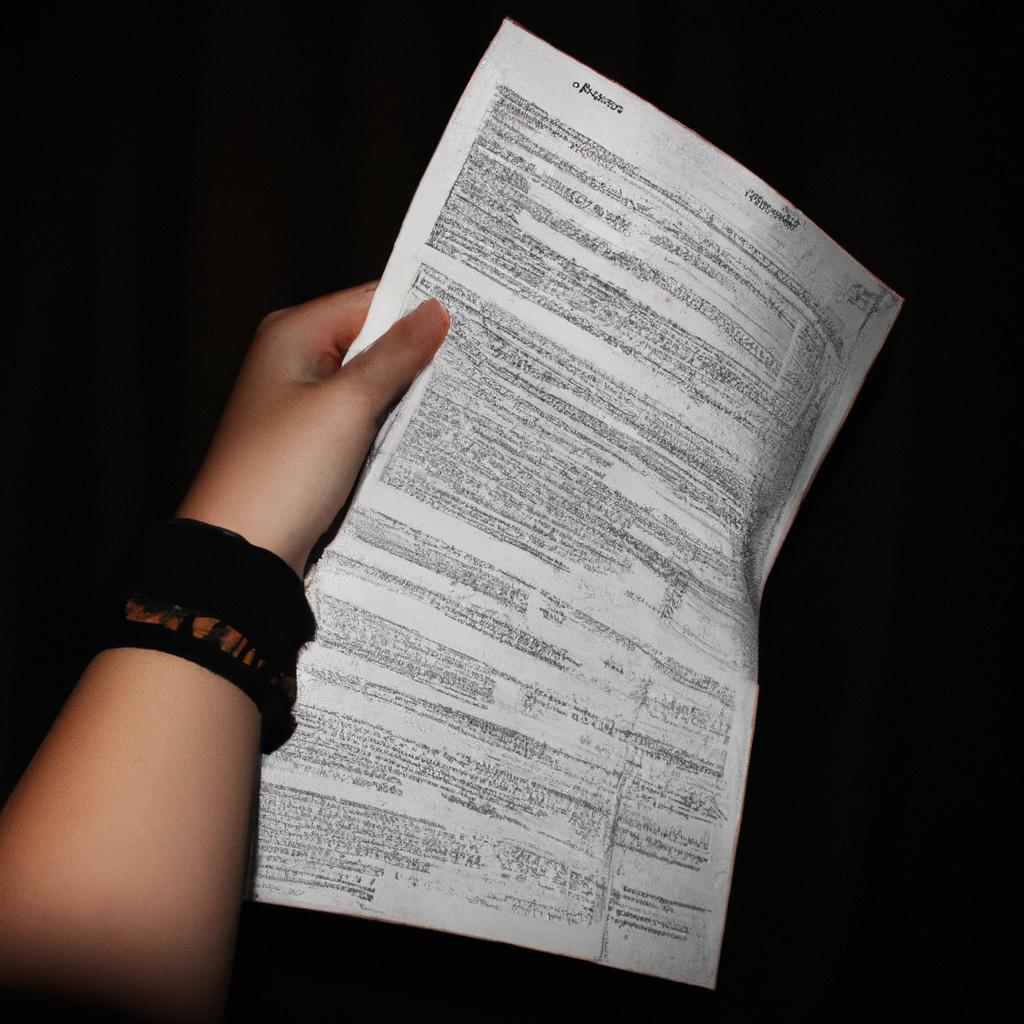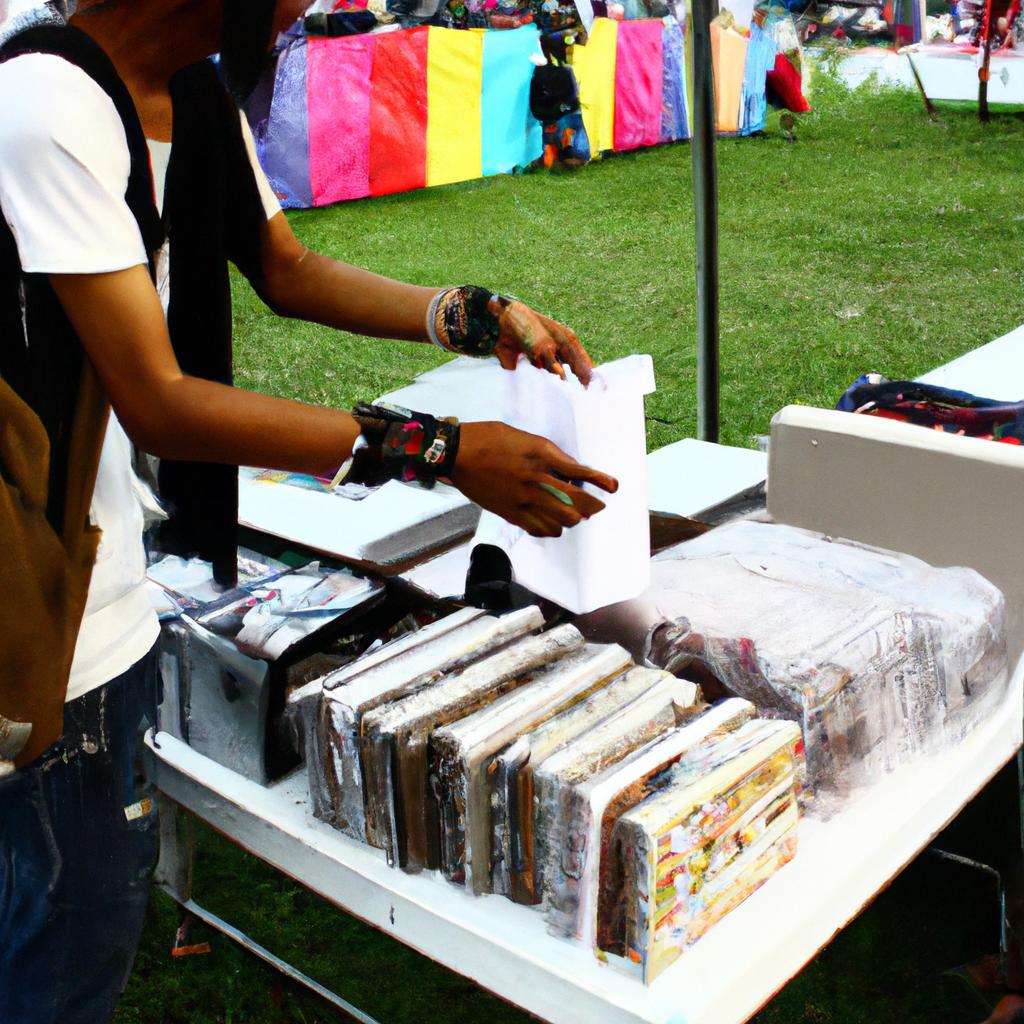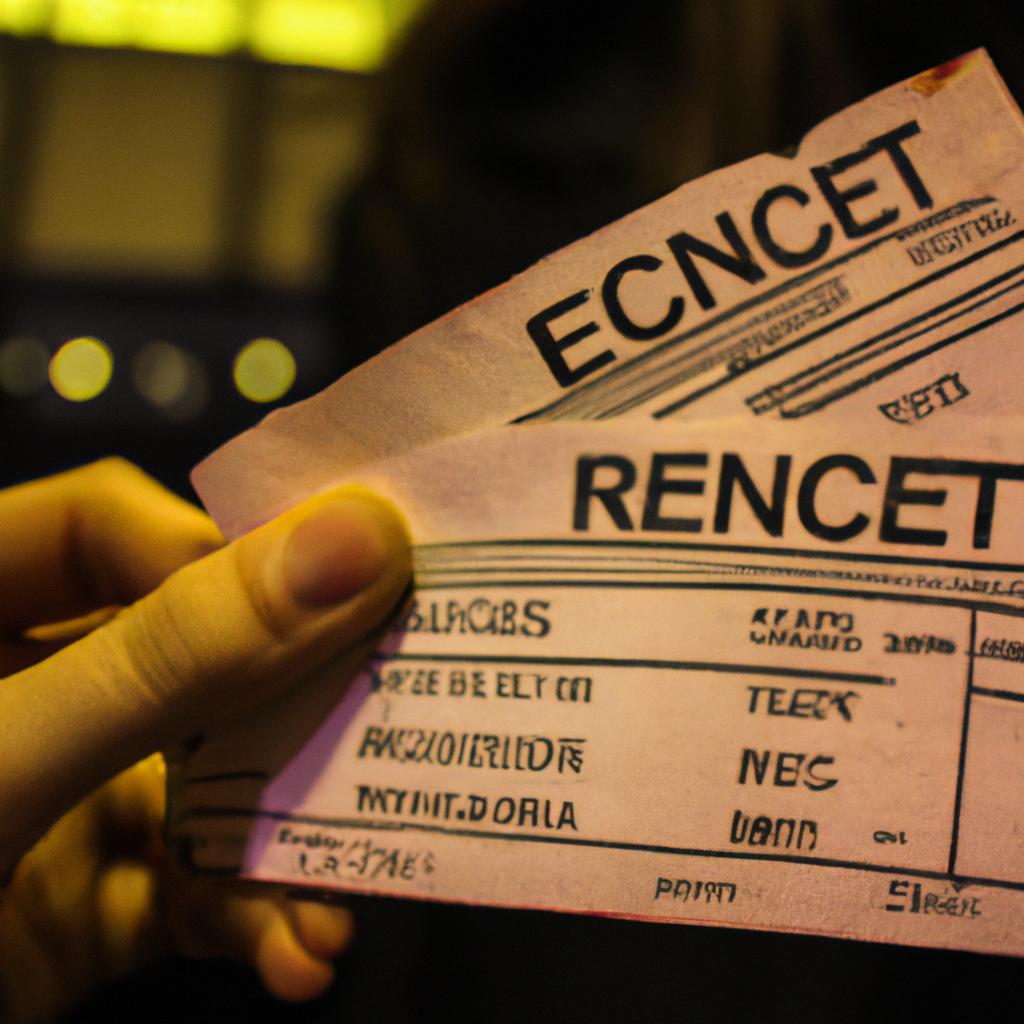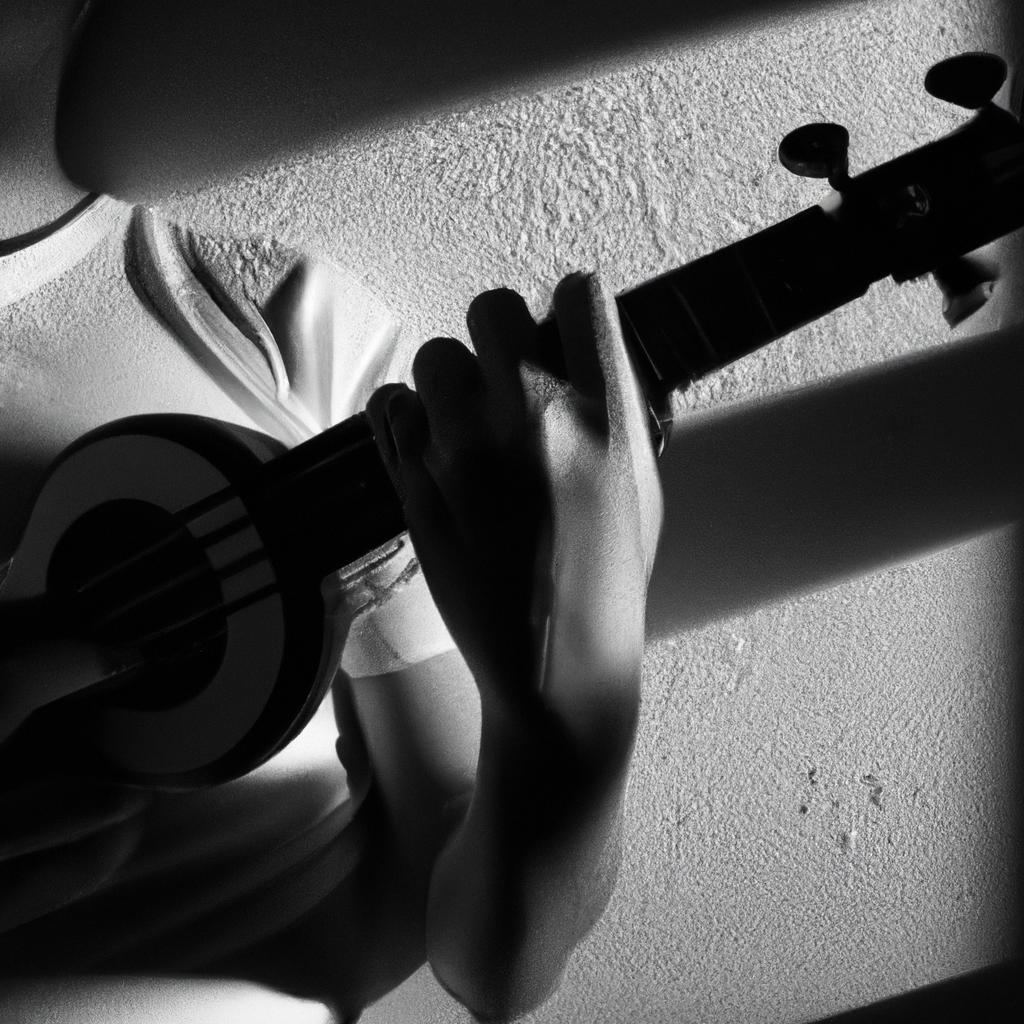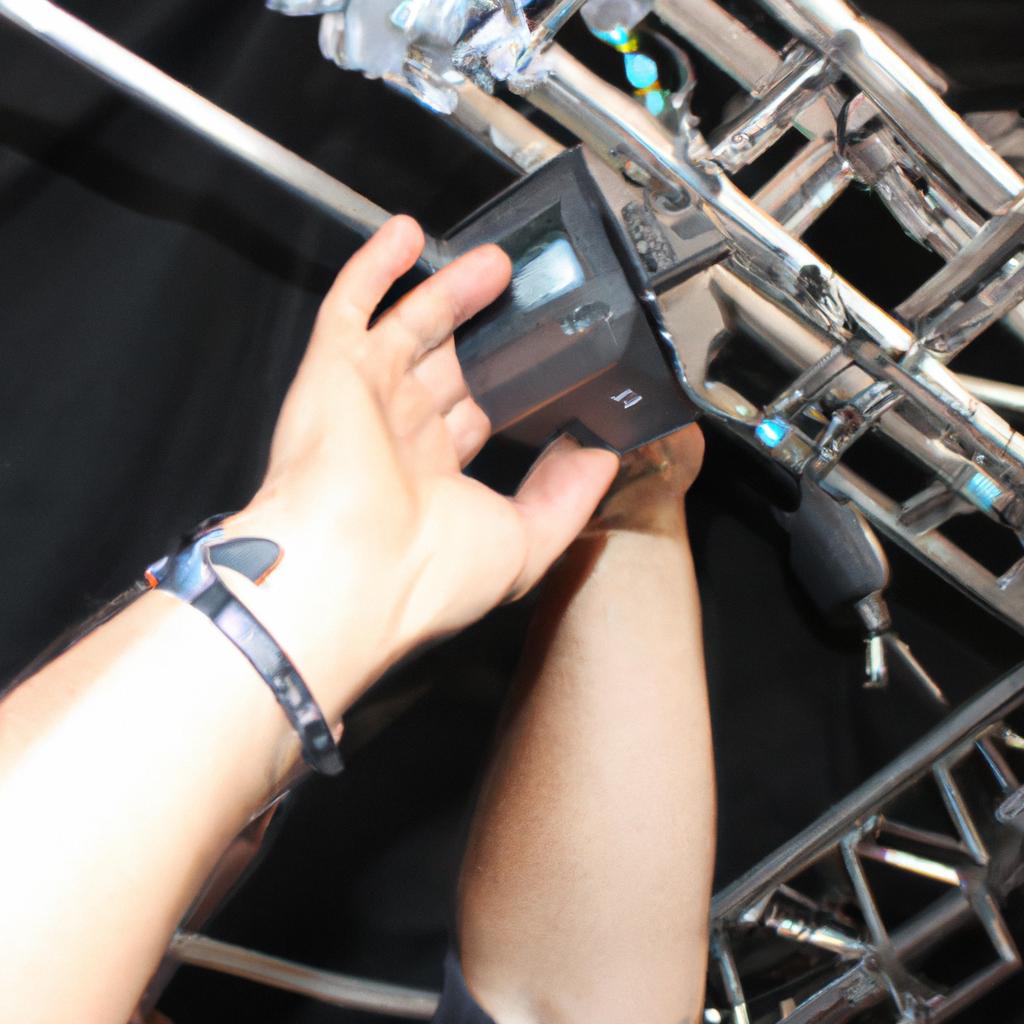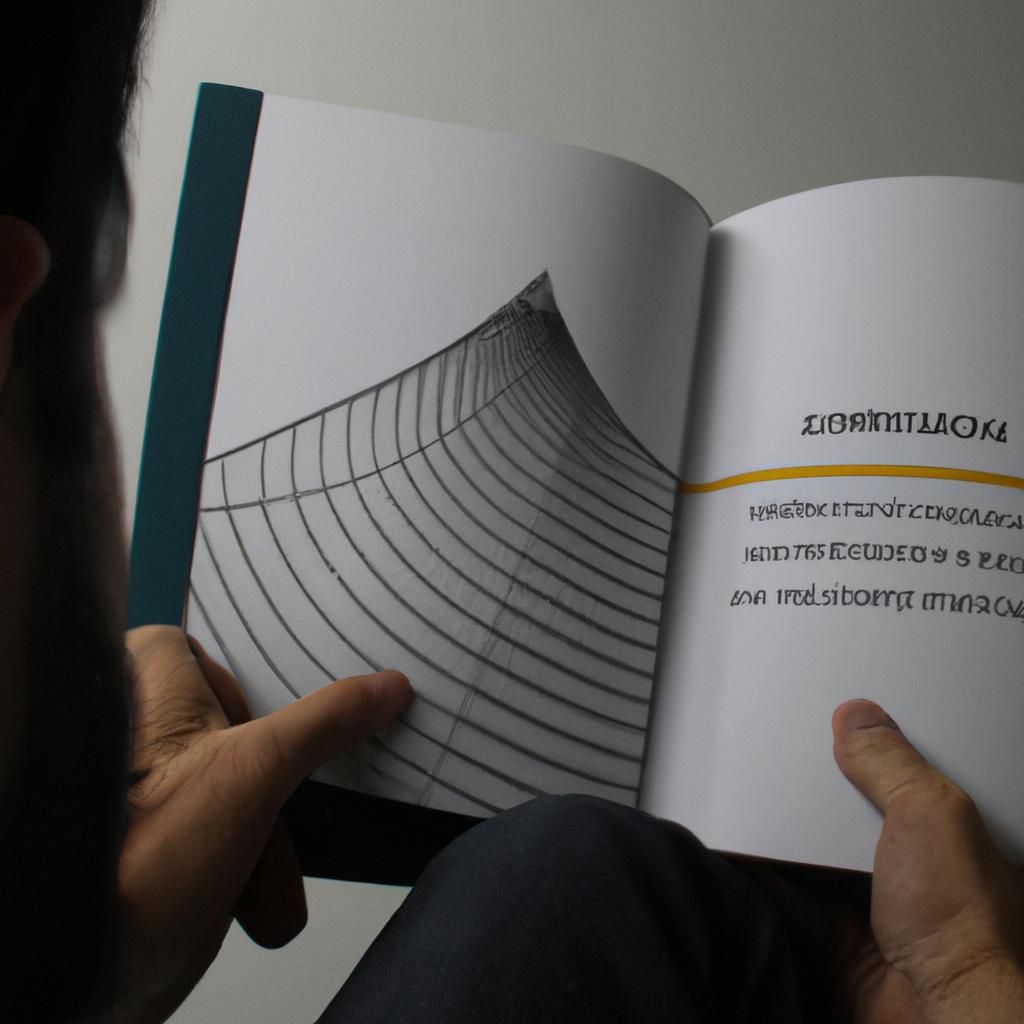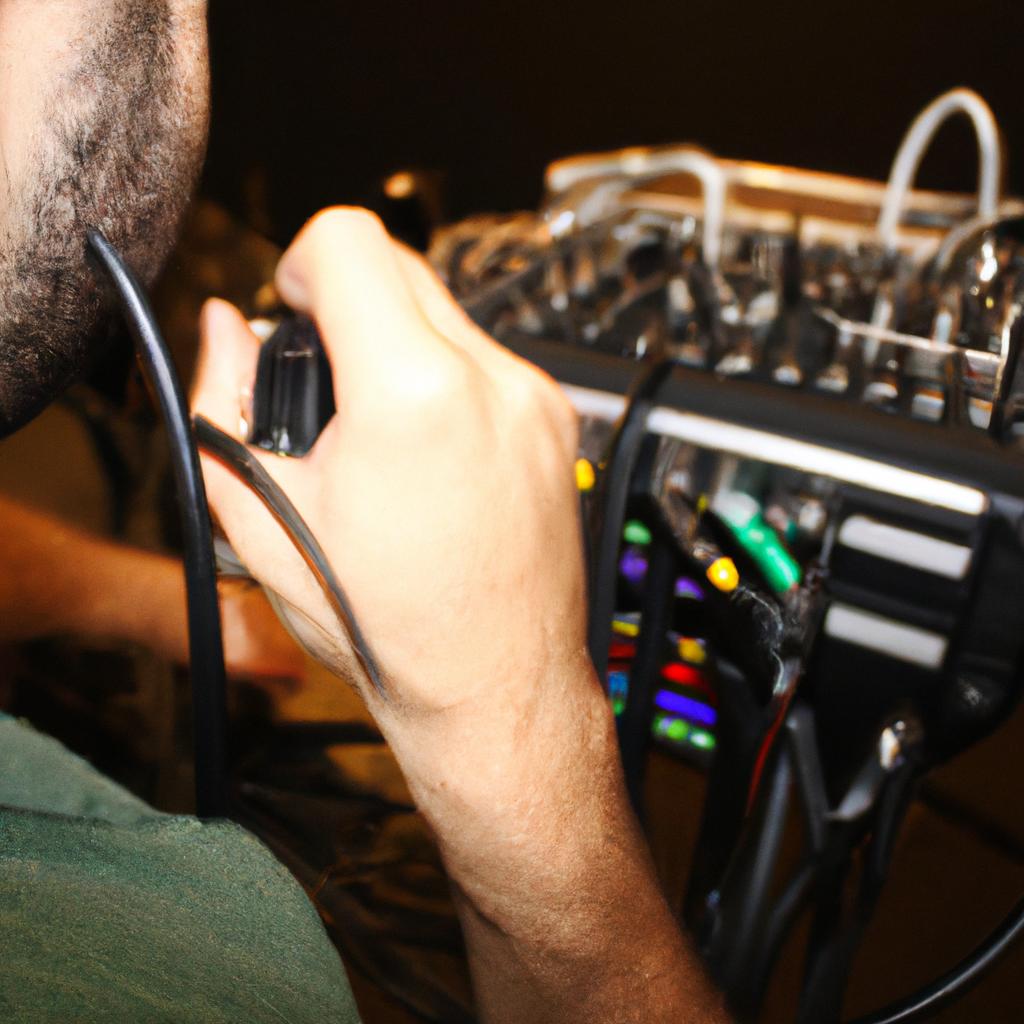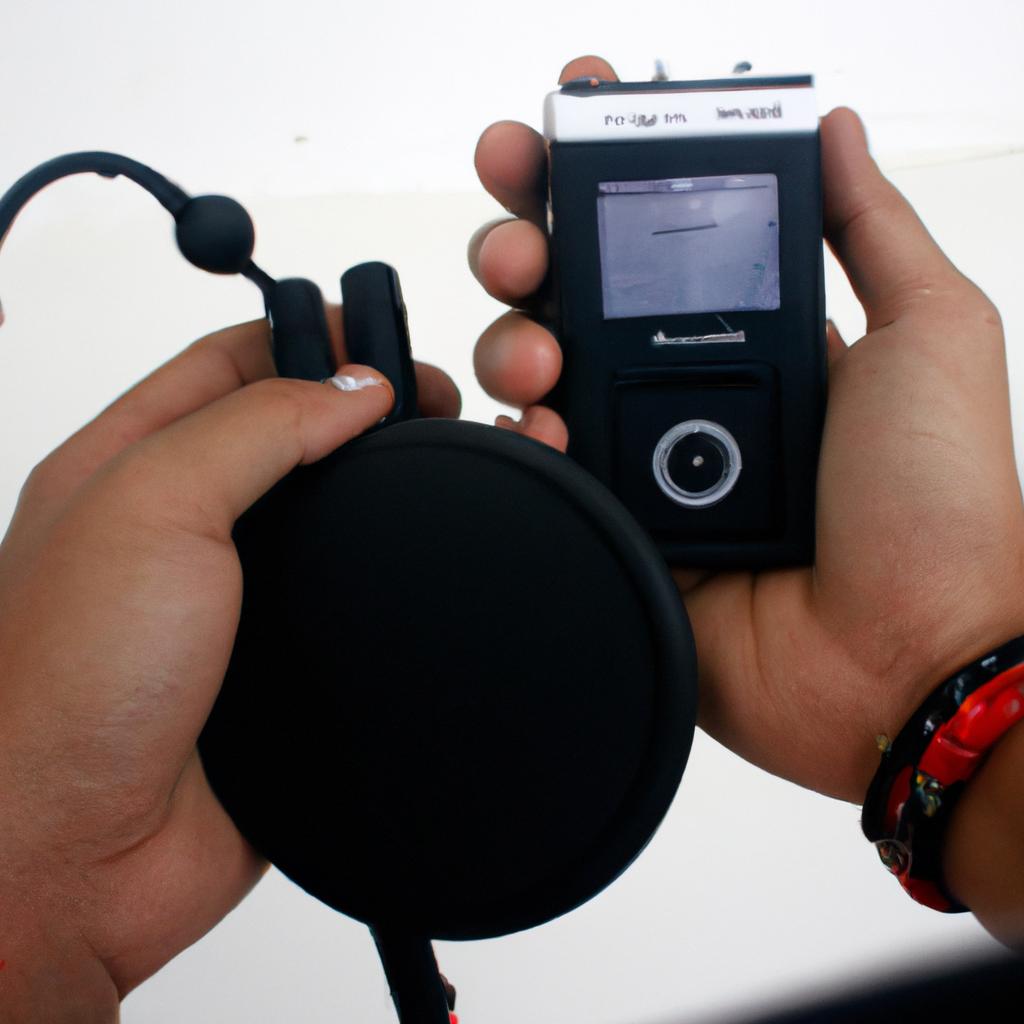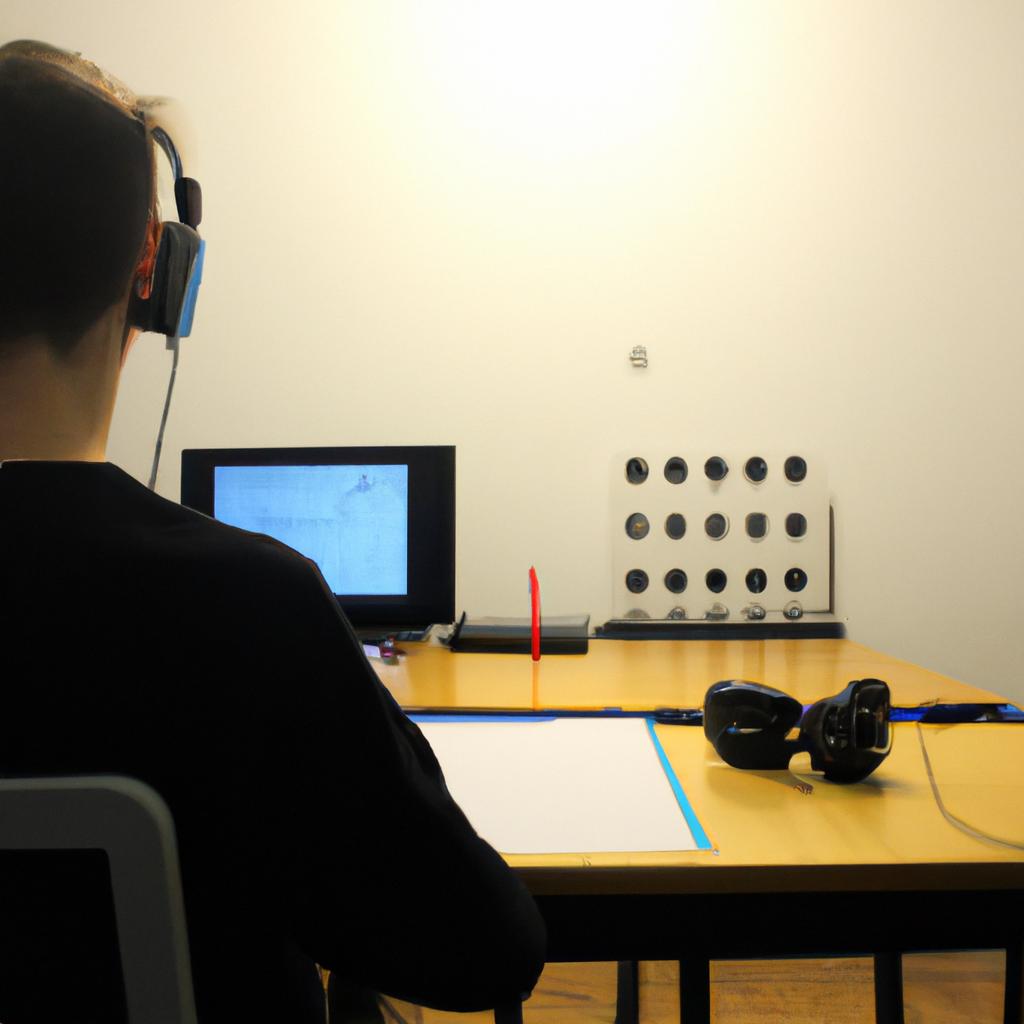Music concerts are a powerful medium through which artists communicate their artistic vision to an audience. The concert setlist, carefully crafted by the artist or their team, plays a crucial role in shaping this communication. It determines the sequence of songs performed during the concert and holds the potential to evoke specific emotions, create memorable experiences, and foster connections with listeners.
For instance, consider a hypothetical case study of a renowned musician planning a comeback tour after years of hiatus. The selection of songs for their concert setlist becomes an essential aspect of showcasing their evolution as an artist while also catering to the expectations and preferences of their fan base. By strategically arranging the songs in a specific sequence, they can take the audience on a journey that reflects their personal growth and resonates with shared experiences. Through careful consideration of sound and vision, both musical and visual elements come together harmoniously to create an immersive experience for concertgoers.
In this article, we will delve into the significance behind concert setlists and explore how artists curate them to deliver impactful performances. We will examine various factors that influence song selection such as thematic coherence, emotional progression, crowd engagement, and even technical considerations like key changes or transitions between different genres. Additionally, we will analyze how visual elements such as stage design, lighting, and multimedia effects can enhance the overall concert experience by complementing the music and adding an extra layer of depth to the artist’s storytelling.
The stage design serves as a canvas for the artist to visually express their music and connect with the audience on a sensory level. It involves considerations such as the placement of instruments, props, or special effects that align with the concert’s theme or concept. For example, if the artist aims to create an intimate and introspective atmosphere, they might opt for a minimalist stage setup with dimmed lighting and subtle visuals. On the other hand, a high-energy performance might call for a dynamic stage design featuring vibrant colors, elaborate backdrops, and synchronized multimedia elements.
Lighting plays a crucial role in setting the mood and enhancing the visual impact of a concert. Different lighting techniques like spotlights, strobes, color washes, or moving lights can be strategically employed to highlight specific moments within each song or create dramatic transitions between different sections of the setlist. Lighting cues are often synchronized with musical cues to accentuate key moments, build anticipation, or evoke certain emotions in real-time.
Multimedia elements such as video projections or LED screens further contribute to the visual experience during a concert. These can be used to display pre-recorded visuals that amplify the meaning behind songs or provide visual narratives that accompany live performances. From abstract imagery to narrative storytelling, multimedia elements add another layer of artistic expression that enhances audience engagement and enriches their overall concert experience.
In summary, while music is undoubtedly at the core of any concert experience, visual elements such as stage design, lighting techniques, and multimedia effects play an integral role in creating a memorable and immersive event. They work hand-in-hand with carefully curated setlists to communicate an artist’s vision effectively while captivating and connecting with audiences on multiple sensory levels.
The anticipation builds as the concert setlist is unveiled.
The anticipation builds as the concert setlist is unveiled.
Imagine yourself standing in a bustling arena, surrounded by excited fans eagerly awaiting the start of their favorite band’s concert. As the lights dim and the stage comes to life, there is an air of mystery surrounding which songs will be performed. For music enthusiasts, discovering the setlist for a live performance can be both exhilarating and nerve-wracking, heightening their anticipation for what lies ahead.
To satiate this curiosity, artists often release their setlists prior to their shows, generating buzz among audiences. This strategic move allows fans to mentally prepare themselves for an unforgettable experience while also creating excitement around how certain songs will be woven together to create a cohesive musical journey. By revealing the setlist beforehand, musicians provide attendees with an opportunity to reminisce about beloved tracks or familiarize themselves with new material.
The impact of releasing a concert’s setlist extends beyond mere logistical information; it serves as a powerful tool in shaping expectations and enhancing emotional connections between performers and fans. To illustrate this point, consider four ways in which unveiling a setlist evokes various emotions:
- Anticipation: Fans eagerly anticipate hearing their most cherished songs performed live.
- Surprise: Unexpected song choices can evoke feelings of delight or intrigue.
- Nostalgia: Familiar tunes from an artist’s back catalog invoke memories and sentimental attachment.
- Excitement: New material offers fresh experiences that excite listeners’ senses.
Moreover, organizing these elements into a visually appealing format adds another layer of engagement. A three-column table showcasing different sections of the setlist—such as fan favorites, deep cuts, and encore selections—can further pique interest among attendees:
| Fan Favorites | Deep Cuts | Encore Selections |
|---|---|---|
| Song A | Song D | Song G |
| Song B | Song E | Song H |
| Song C | Song F | Song I |
This table format not only presents the setlist in a clear and concise manner but also offers fans an opportunity to mentally prepare themselves for each section of the concert, heightening their emotional connection with the performance.
In summary, unveiling a concert’s setlist generates anticipation, surprise, nostalgia, and excitement among fans. By providing them with information about which songs will be performed, musicians foster emotional connections while allowing attendees to mentally engage with the upcoming event. A diverse mix of fan favorites and new material make up the setlist, promising a memorable experience that satisfies both long-time supporters and those eager to discover something fresh from their favorite artists.
A diverse mix of fan favorites and new material make up the setlist.
Sound and Vision: Concert Setlist Revealed
Building on the anticipation from the previous section, fans eagerly await the moment when the concert setlist is finally unveiled. This crucial element of any live performance holds the power to shape the entire experience for both musicians and audience members alike. Let us explore how a dynamic mix of fan favorites and new material can come together to create an unforgettable concert atmosphere.
Consider, for example, a hypothetical case where a popular rock band prepares to embark on their highly anticipated world tour. As they reveal their setlist, excitement fills the air among devoted followers who have been anxiously waiting for this moment. The carefully curated selection aims to strike a balance between nostalgia-inducing classics that will ignite waves of sing-alongs and fresh tracks that showcase the band’s evolution as artists.
To further understand the impact of such a well-crafted setlist, let us delve into four key reasons why it plays a vital role in shaping the overall concert experience:
- Emotional journey: A thoughtfully arranged setlist takes listeners on an emotional rollercoaster ride, guiding them through highs and lows with expert precision. By strategically placing songs with varying tempos and moods throughout the performance, performers can evoke powerful emotions within their audience.
- Audience engagement: Mixing fan favorites with newer material ensures that long-time supporters are rewarded while also piquing curiosity among casual listeners or those less familiar with the artist’s discography. This blend encourages active participation from attendees of all backgrounds, fostering a sense of unity in shared musical appreciation.
- Narrative flow: Just like chapters in a book or scenes in a film, each song performed contributes to an overarching narrative during a live concert. From energetic opening numbers designed to grab attention to poignant ballads that invite reflection, every piece serves its purpose in constructing an engaging storyline.
- Artistic progression: Introducing new material allows musicians to display growth and experimentation while maintaining the core essence of their sound. A well-received live performance featuring fresh songs often serves as a testament to an artist’s ability to evolve and adapt, earning them respect from fans and critics alike.
| Emotional Journey | Audience Engagement | Narrative Flow | Artistic Progression |
|---|---|---|---|
| Powerful highs and lows evoke emotions within listeners | Rewards long-time supporters while intriguing new audience members | Constructs an engaging storyline through song selection | Demonstrates artistic growth and experimentation |
In essence, the concert setlist is not merely a collection of songs but rather a carefully crafted musical journey that seeks to entertain, engage, and leave a lasting impact on those in attendance. The opening song sets the tone for the entire concert experience, inviting listeners into a world where music becomes more than just sounds—it becomes an immersive adventure filled with unforgettable moments.
The opening song sets the tone for the entire concert experience.
Building on the diverse mix of fan favorites and new material, the concert setlist not only excites fans but also sets the tone for an unforgettable experience. With careful consideration given to song placement, tempo, and thematic progression, each song serves a specific purpose in creating a cohesive journey through sound and vision.
The opening song holds immense significance as it establishes the atmosphere for the entire concert. Imagine you are attending a rock concert where the first song played is a high-energy anthem that immediately captures your attention and gets your heart racing. This strategic choice ignites excitement among the audience right from the start, setting the tone for what’s to come.
To further engage listeners emotionally throughout the concert, several elements contribute to its overall impact:
- The carefully curated combination of long-established hits along with fresh tracks creates anticipation and keeps fans invested in both familiar favorites and exciting new sounds.
- Transitions between songs are thoughtfully crafted to maintain momentum and seamlessly guide listeners from one emotional state to another.
- Dynamic contrast plays a pivotal role in evoking various emotions throughout the performance; softer ballads may bring introspection and nostalgia while powerful anthems inspire energy and unity.
- Incorporating special effects such as visual projections or pyrotechnics heightens sensory stimulation, enhancing emotional connection with each musical moment.
Table: Emotional Journey Through Sound
| Emotion | Song Example | Moment Description |
|---|---|---|
| Excitement | “Rockin’ All Night” | Opening number; explosive energy |
| Nostalgia | “Timeless Melodies” | Mid-concert medley featuring classic hits |
| Empowerment | “Stand Strong” | Uplifting anthem encouraging resilience |
| Reflection | “Whispers of Solitude” | Intimate acoustic performance invoking contemplation |
As this sonic expedition unfolds, audiences find themselves immersed in a range of emotions, connecting deeply with the music and experiencing a transformative journey. The setlist’s careful arrangement intertwines various themes, moods, and musical styles to create an unforgettable concert experience.
Special guest appearances add excitement to the already electrifying setlist.
As the crowd eagerly awaits their favorite artist to take the stage, the opening song holds significant importance in setting the tone for the entire concert experience. This initial performance has a powerful impact on shaping the atmosphere and expectations of both the audience and performers. To illustrate this point, let us consider an example where a renowned rock band kicks off their show with an energetic anthem that immediately captivates everyone in attendance.
The choice of the opening song can greatly influence how concert-goers perceive and engage with the rest of the setlist. It serves as a musical introduction, paving the way for what is yet to come throughout the night. By carefully selecting a track that mirrors or contrasts with their overall theme or style, musicians have an opportunity to create anticipation or surprise among their fans. This deliberate decision showcases their artistry and ability to curate a cohesive musical journey.
To further understand how impactful an opening song can be, consider these emotional responses it may evoke:
- Excitement: A fast-paced, upbeat tune instantly energizes and rallies up the crowd.
- Nostalgia: Hearing a beloved classic as an opener evokes feelings of nostalgia and transports listeners back to cherished memories associated with that particular song.
- Intrigue: An unconventional choice might pique curiosity, leaving attendees intrigued about what lies ahead.
- Unity: When lyrics resonate deeply with fans’ experiences or emotions, singing along collectively creates a sense of unity within the venue.
In addition to considering emotional responses elicited by various songs, artists also take into account factors such as lyrical content, tempo, instrumentation, and popularity when deciding which track will kickstart their performance. These elements work together harmoniously to craft an unforgettable beginning that leaves a lasting impression on concert-goers.
| Emotional Response | Example Song |
|---|---|
| Excitement | “Jump” by Van Halen |
| Nostalgia | “Sweet Child o’ Mine” |
| Intrigue | “Paranoid Android” |
| Unity | “We Will Rock You” |
As the opening song resonates throughout the venue, it sets the stage for what lies ahead in the concert. The energy and emotions conveyed during this initial performance lay the foundation for an unforgettable night of music. With anticipation building and hearts racing, attendees eagerly await each subsequent act, as they know that every choice made within the setlist contributes to a unique and memorable experience.
The encore leaves the audience wanting more. [Sentence transition into next section]
The encore leaves the audience wanting more.
Building on the excitement generated by special guest appearances, the concert’s setlist continues to captivate audiences with its diverse range of musical selections.
Section:
The carefully curated setlist ensures that each song seamlessly transitions into the next, creating a cohesive and immersive experience for attendees. One example of this expertly crafted flow can be seen in the middle portion of the performance where the band effortlessly transitions from an energetic rock anthem to a soulful ballad, captivating the audience throughout.
To further enhance the emotional impact of their music, the artists strategically incorporate elements such as tempo changes and dynamic shifts within their performances. This deliberate manipulation of sound creates a sense of anticipation among listeners, keeping them engaged and invested in every moment. The result is an electrifying atmosphere that envelops both performers and spectators alike.
As emotions run high during certain songs, the concert organizers have also included visual effects that complement and amplify these intense moments. From stunning light displays synchronized with rhythmic beats to mesmerizing projections enhancing lyrical themes, these visuals serve as powerful catalysts for emotional resonance among concertgoers. They effectively transport individuals to another realm where they can fully immerse themselves in the music and connect with it on a profound level.
This careful attention to detail extends beyond just the auditory and visual aspects; it also encompasses thoughtful consideration for audience engagement. To foster a sense of unity and shared experience, interactive elements are incorporated into select songs, encouraging crowd participation through sing-alongs or call-and-response segments. Such moments not only elevate energy levels but also create lasting memories for those fortunate enough to witness them live.
- Awe-inspiring lighting effects heighten climactic sections
- Heartfelt ballads bring tears to many eyes
- Energetic anthems ignite feelings of euphoria
- Interactive segments foster a strong sense of camaraderie
Table showcasing notable songs:
| Song Title | Emotion Evoked | Memorable Line |
|---|---|---|
| “Rise Above” | Empowerment | “We will overcome!” |
| “Fading Away” | Melancholy | “Lost in the silence” |
| “Revolution” | Rebellion | “Stand up and fight” |
| “Celestial Love” | Transcendence | “Infinite beauty” |
The carefully curated setlist creates an unforgettable live music event, captivating audiences with its seamless transitions, emotional resonance, and engaging moments. Now, let’s explore how the encore leaves the audience wanting more.
The carefully curated setlist creates an unforgettable live music event.
Sound and Vision: Concert Setlist Revealed
In the previous section, we explored how the encore of a live music performance can leave the audience wanting more. Now, let us delve into the carefully curated setlist that creates an unforgettable live music event.
Consider a hypothetical scenario where an iconic rock band is performing their farewell tour. The anticipation among fans is palpable as they eagerly await the moment when the lights dim and familiar chords fill the air. As the concert begins, it becomes apparent that each song has been selected with great care to evoke emotions and create lasting memories.
The art of crafting a setlist lies in striking a balance between fan favorites, new releases, and lesser-known gems from the artist’s discography. Here are some key elements to consider when creating such a setlist:
-
Emotional journey: A well-curated setlist takes listeners on an emotional rollercoaster ride, moving seamlessly from high-energy anthems to introspective ballads. This variety keeps audiences engaged throughout the performance and allows them to connect deeply with both the music and its message.
-
Flow and transitions: Like chapters in a book or scenes in a movie, each song should flow naturally into the next, creating a cohesive narrative within the concert experience. Thoughtful attention to transitions ensures that there are no jarring shifts in mood or tempo – instead, it feels like one continuous sonic journey.
-
Surprise factor: Incorporating unexpected choices into the setlist adds an element of surprise that delights fans who may have attended multiple shows during a tour. These surprises could include rare tracks rarely performed live or surprising collaborations with guest artists, elevating excitement levels within the crowd.
-
Climactic moments: Building up towards climactic moments strategically placed within the setlist amplifies anticipation and creates unforgettable highlights for attendees. These peak moments might involve extended guitar solos, breathtaking vocal performances, or visually stunning stage effects synchronized perfectly with musical crescendos.
Take a look at the following table, showcasing an example setlist from the aforementioned hypothetical farewell tour:
| Song | Emotional Tone | Highlights |
|---|---|---|
| “Opening Anthem” | Energetic | Pyrotechnics and crowd interaction |
| “Nostalgic Ballad” | Reflective | Intimate acoustic performance |
| “Powerhouse Rock” | High-energy | Extended guitar solo |
| “Collaboration Jam” | Exciting | Surprise guest musician |
In conclusion, a well-curated setlist can transform a live music event into an unforgettable experience. By carefully considering emotional journeys, flow and transitions, surprise factors, and climactic moments, artists have the power to create a show that resonates deeply with their audience. Whether it’s a farewell tour or any other concert, the selection of songs plays a vital role in shaping memories that will last long after the final note fades away.

